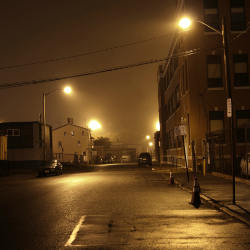
The longer days around the summer solstice in higher latitudes offer more freedom to shift daylight from morning to evening so that early morning daylight is not wasted. Most of the working day contains the narrow band of daylight during winter. Darkness lasts much longer on a midwinter morning than on a midsummer morning.
‘Single Double Summertime’ (SDST) or simply ‘lighter evenings’ would move the clocks to GMT+1 in the winter and GMT+2 in the summer. Many countries have experimented with changing their clocks with varying results and consequences, here are a few examples.
USA
Researchers at Carnegie Mellon University in Pittsburgh found that pedestrians were three times more likely to be fatally struck by cars in the first few weeks after the clocks go back in the autumn. In Indiana, an experiment indicated that DST increases residential electricity demand. Estimates of the increase in the cost of electricity were approximately 1%. Another study showed that losing just an hour of sleep could pose some dangerous consequences for those in hazardous work environments.
Scotland
SDST would match the Scots’ waking hours with the available hours of daylight. Every day of the year would have an extra hour of evening daylight. The later sunrise would affect workers on only 60 weekdays in winter. Office staff would enjoy 300 additional extra hours of daylight in a year. Scottish children would gain 200 daylight hours a year. Aligning the evening peak in traffic with daylight hours could reduce the frequency of accidents. It might also encourage more physical activity. The additional exposure to sunshine would be therapeutic. It would compensate for vitamin D deficiency. It would reduce levels of SAD (Seasonal Affective Disorder). Advancing the clocks could reduce domestic electricity bills by around 1.5% per year.
Ireland
Ireland experimented with permanent summertime from 1968 to 1971. Many teachers complained that children had to leave for school in the dark on winter mornings, frequently in bad weather. It was also much colder before daylight and it was difficult to begin a days work in darkness on building sites. Postmen, council workers and deliverymen all suffered badly. Changing the clocks resumed in 1972. The best answer for Ireland might be to split the difference of one hour between Summer Time and Winter Time. True Dublin Time is 25 minutes behind Greenwich Mean Time. Therefore, let Irish Summer Time be officially 30 minutes ahead of GMT all year round.
Portugal
Portugal moved to Central European Time in 1992, but reverted to Greenwich Mean Time in 1996. The energy savings were small.
Sweden
A study of Swedish records (over a 20-year period) published in the New England Journal of Medicine in 2008 found a 7% higher incidence of heart attacks in the first three weekdays after the clocks spring forward. Researchers attributed this to a lack of sleep. They noted a similar decrease when the clocks fall back in the fall.
Elsewhere
DST isn't used everywhere in the world. Saskatchewan and some parts of British Columbia don’t use it. Neither do Arizona nor Hawaii. It is unnecessary at or near the equator, where the length of each day varies by just a small amount and the vast majority of countries in Africa and Asia don’t use daylight saving time.
What these examples show is that any decision to change the clocks should be a political one based on assessment of the advantages and disadvantages compared with maintaining the status quo. That decision should be made on fact rather than on opinion.



